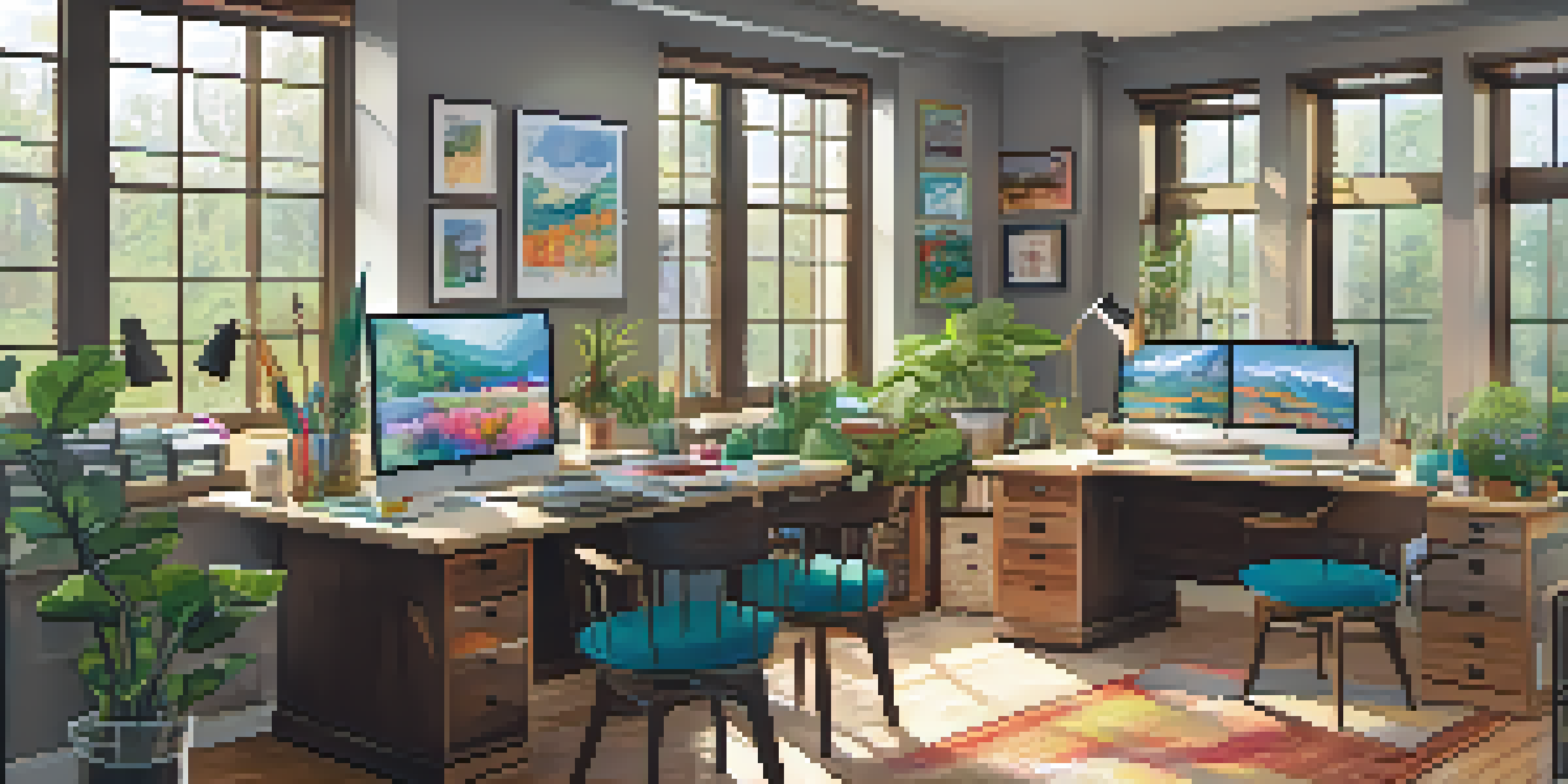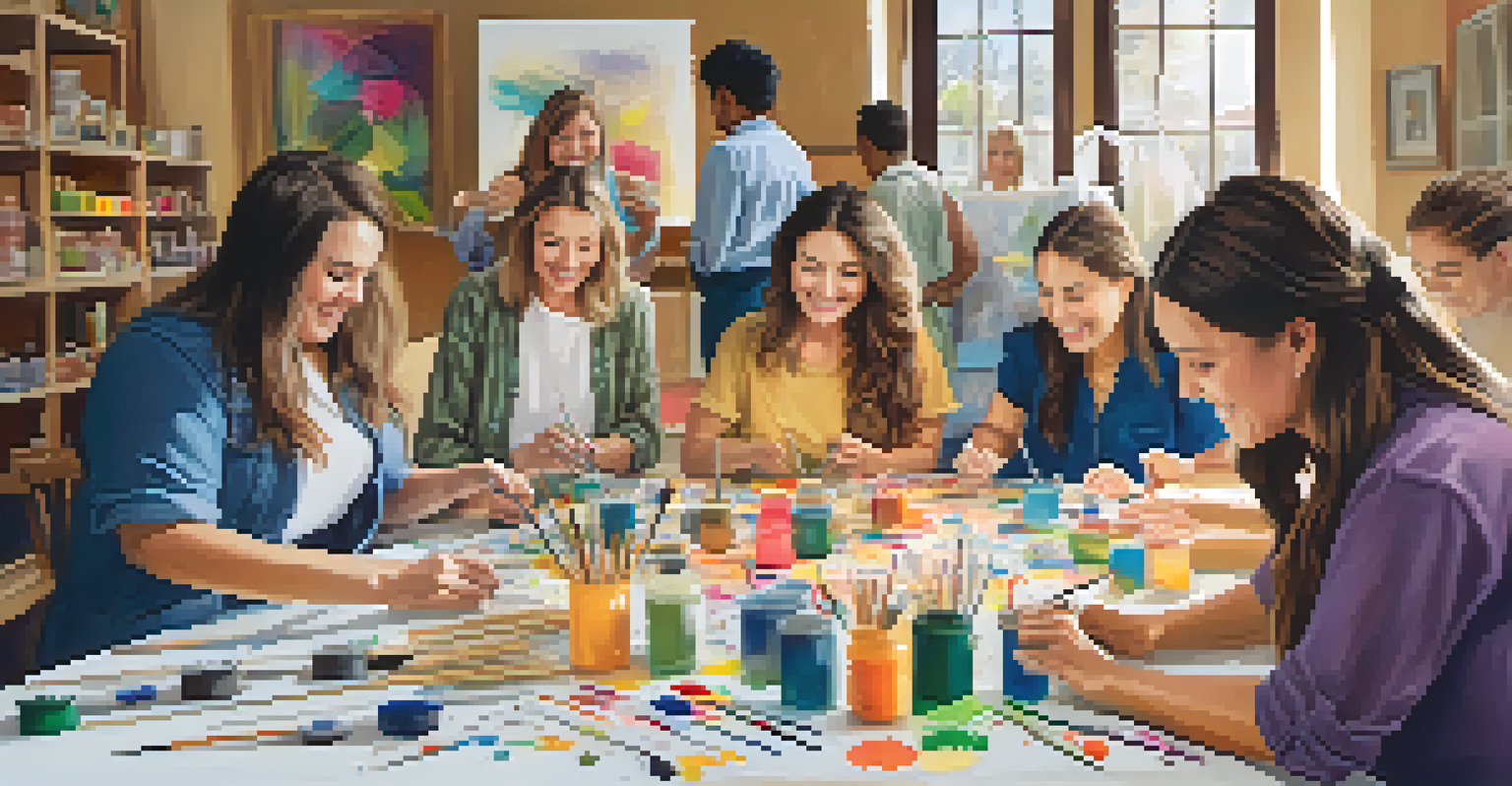Incorporating Arts and Crafts for Employee Relaxation

Understanding the Importance of Employee Relaxation
In today's fast-paced work environment, employee relaxation is crucial for maintaining overall wellbeing. A relaxed employee is often more productive, creative, and engaged in their work. By prioritizing relaxation, companies can foster a more positive workplace culture.
Creativity is intelligence having fun.
Stress can lead to burnout, which not only affects individual performance but can also impact team dynamics. Recognizing the signs of stress and providing ways to alleviate it is essential for any organization aiming for success. Arts and crafts can be an effective tool in this regard, offering a creative outlet for employees.
By incorporating arts and crafts into the workplace, companies can create a dedicated space for relaxation and creativity. This not only encourages employees to take breaks but also promotes a sense of community as they engage in these shared activities.
The Therapeutic Benefits of Arts and Crafts
Engaging in arts and crafts has been shown to have therapeutic benefits that can significantly reduce stress and anxiety. The act of creating something can be incredibly fulfilling, providing a sense of accomplishment and joy. Simple activities like painting or knitting can serve as a mental getaway from daily pressures.

Moreover, arts and crafts encourage mindfulness—a practice that helps individuals stay present and focused. This can lead to improved mental clarity and a reduction in worry, making it easier for employees to tackle their tasks with a fresh perspective. It's a win-win situation.
Employee Relaxation Boosts Wellbeing
Prioritizing employee relaxation through creative activities enhances productivity, creativity, and workplace culture.
Incorporating such activities into the workday can also help employees develop new skills and hobbies, enriching their personal lives. The creativity fostered through arts and crafts can translate into innovative thinking in their professional roles.
Creating a Dedicated Arts and Crafts Space
To truly benefit from arts and crafts, it's vital to create a dedicated space within the workplace. This space should be inviting, stocked with various supplies, and designed to inspire creativity. A well-designed area can encourage employees to step away from their desks and engage in artistic activities.
Art is not freedom from discipline, but disciplined freedom.
Consider incorporating comfortable seating, natural lighting, and even calming music to enhance the atmosphere. Having a designated area will send a clear message that the company values relaxation and creativity. It helps to break down the monotonous work environment and encourages a more dynamic workplace culture.
Additionally, rotating the types of crafts available can keep interest levels high. From painting to pottery, offering a variety of options allows employees to explore their preferences and discover new passions.
Implementing Regular Arts and Crafts Workshops
Hosting regular arts and crafts workshops can be a fantastic way to engage employees and foster a sense of community. These sessions can be led by local artists or even talented employees who wish to share their skills. The collaborative nature of these workshops not only promotes relaxation but also strengthens team bonds.
Workshops can range from simple activities like making greeting cards to more complex projects such as sculpture or mosaic art. Offering a variety of workshops caters to different interests and skill levels, ensuring that everyone feels included and encouraged to participate.
Arts and Crafts Foster Community
Incorporating arts and crafts into the workplace encourages team bonding and a sense of belonging among employees.
Moreover, these workshops can serve as a fantastic team-building exercise. Employees will not only learn new skills but also share laughs and create lasting memories together, enhancing workplace relationships.
Encouraging Personal Projects During Breaks
Encouraging employees to engage in personal arts and crafts projects during their breaks can significantly enhance their relaxation. Whether it’s knitting, doodling, or crafting, these activities allow employees to unwind and recharge. Personal projects can serve as a refreshing mental break from work-related tasks.
By allowing flexibility in break time activities, employees can feel more empowered to pursue their passions. This not only boosts morale but also encourages creativity that can spill over into their professional responsibilities. A happier employee is often a more productive one.
Providing access to supplies and resources for personal projects shows that the company values employee wellbeing. It cultivates a culture where creativity is celebrated, and employees feel comfortable expressing themselves.
Promoting Arts and Crafts through Company Events
Incorporating arts and crafts into company events can elevate the experience and promote a sense of relaxation. Whether it's a holiday party or a team retreat, offering creative activities can add a unique touch to the event. Employees will appreciate the opportunity to unwind and express themselves outside of traditional work settings.
Events can include craft stations where employees can create decorations, personalized gifts, or even collaborative art pieces. This not only provides a fun and engaging activity but also fosters teamwork and collaboration.
Measuring Impact Enhances Programs
Regularly assessing the effects of arts and crafts initiatives helps refine approaches and demonstrates their value to management.
Moreover, these creative outlets can lead to memorable experiences that strengthen the company culture. Employees will leave with not only a sense of satisfaction but also a deeper connection to their colleagues.
Measuring the Impact of Arts and Crafts on Employee Wellbeing
To ensure that arts and crafts initiatives are effective, it’s important to measure their impact on employee wellbeing. Surveys and feedback sessions can provide valuable insights into how employees feel about these activities. Understanding their preferences and experiences can help refine the approach and make it even more beneficial.
Tracking changes in productivity, morale, and overall job satisfaction can illustrate the positive effects of incorporating arts and crafts into the workplace. Such data can also help justify continued investment in these programs to upper management.

Ultimately, fostering a culture that prioritizes relaxation and creativity will lead to a happier, healthier workforce. Companies that invest in their employees’ wellbeing are likely to see long-term benefits in retention and performance.